Charles M. Kozierok The TCP-IP Guide
Подождите немного. Документ загружается.

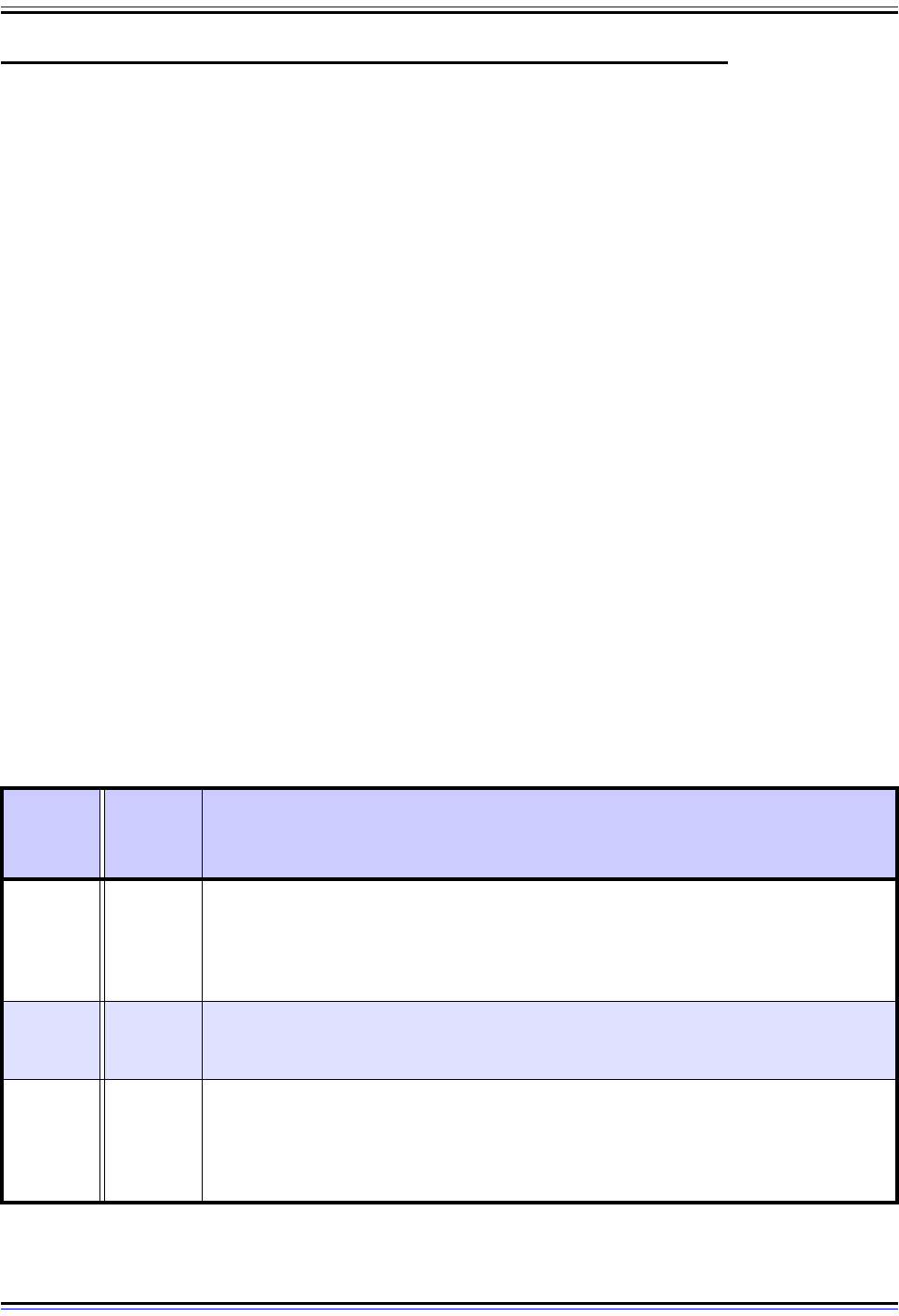
The TCP/IP Guide - Version 3.0 (Contents) ` 1181 _ © 2001-2005 Charles M. Kozierok. All Rights Reserved.
Summary Of DHCP Options / BOOTP Vendor Information Fields
BOOTP vendor information fields are used to carry additional vendor-independent configu-
ration parameters. These were used as the basis for DHCP options, which extend the
concept to include parameters used to manage the operation of DHCP as a whole, as
described in the preceding topic. Since BOOTP vendor information fields and DHCP
options are essentially the same (except for the DHCP-specific fields), they are described in
the same TCP/IP standard, and hence, in this single Guide topic.
Below I have included a number of tables, organized by the RFC 2132 option categories,
that list each of the DHCP options / BOOTP vendor information fields. I have shown each
option's Code value, and the length of the Data subfield for the option, in bytes. I have then
provided the formal name of the option and a brief description of how it is used. For
simplicity, in the tables below I say just “options”; please read “option” as “option / vendor
information field”, since they are the same (except, again, the DHCP-specific options.)
There are a lot of options in these tables, and some of them define parameters that are
used by somewhat obscure protocols that I may not cover in this Guide, so don't be put off
if the brief description is not enough for you to completely understand how each and every
option is used. Other options will seem quite familiar to you based on other discussions in
this Guide. Note in particular that many of the original BOOTP vendor information fields that
are used to communicate the addresses of certain types of servers are now archaic and
may no longer be used.
RFC 1497 Vendor Extensions
Table 193 shows the DHCP/BOOTP options that were originally defined in RFC 1497.
Table 193: DHCP/BOOTP Options: RFC 1497 Vendor Extensions (Page 1 of 3)
Code
Value
Data
Length
(bytes)
Name and Description
0 0
Pad: A single byte used as “filler” to align a subsequent field on a word (two-byte)
boundary. Contains no information.
One of two options that is a single byte in length, having no Data subfield (the other
being the End option below.)
1 4
Subnet Mask: A 32-bit subnet mask being supplied for the client to use on the
current network. Must appear in the option list before the Router option if both are
present.
2 4
Time Offset: Specifies the time offset of the client's subnet in seconds from Coordi-
nated Universal Time (UTC, formerly Greenwich Mean Time or GMT). Positive
values represent areas east of the prime meridian (in the United Kingdom),
negative values areas west. Essentially, this is used to indicate the time zone of the
subnet.

The TCP/IP Guide - Version 3.0 (Contents) ` 1182 _ © 2001-2005 Charles M. Kozierok. All Rights Reserved.
3
Variable
(Multiple
of 4)
Router: Specifies a list of 32-bit router addresses for the client to use on the local
network. Routers are listed in the order of preference for the client to use.
4
Variable
(Multiple
of 4)
Time Server: Specifies a list of time server addresses (per RFC 868) for the client
to use on the local network. Servers are listed in the order of preference for the
client to use.
5
Variable
(Multiple
of 4)
IEN-116 Name Server: Specifies a list of IEN-116 name server addresses for the
client to use on the local network. Servers are listed in the order of preference for
the client to use.
Note that this option is not used for DNS name servers; see below.
6
Variable
(Multiple
of 4)
DNS Name Server: Specifies a list of DNS name server addresses for the client to
use on the local network. Servers are listed in the order of preference for the client
to use.
7
Variable
(Multiple
of 4)
Log Server: Specifies a list of MIT-LCS UDP log server addresses for the client to
use on the local network. Servers are listed in the order of preference for the client
to use.
8
Variable
(Multiple
of 4)
Cookie Server: Specifies a list of RFC 865 “cookie” server addresses for the client
to use on the local network. Servers are listed in the order of preference for the
client to use.
9
Variable
(Multiple
of 4)
LPR Server: Specifies a list of RFC 1179 line printer server addresses for the client
to use on the local network. Servers are listed in the order of preference for the
client to use.
10
Variable
(Multiple
of 4)
Impress Server: Specifies a list of Imagen Impress server addresses for the client
to use on the local network. Servers are listed in the order of preference for the
client to use.
11
Variable
(Multiple
of 4)
Resource Location Server: Specifies a list of RFC 887 resource location server
addresses for the client to use on the local network. Servers are listed in the order
of preference for the client to use.
12 Variable
Host Name: Specifies a host name for the client. This may or may not be a DNS
host name; see option #15 below.
13 2
Boot File Size: Specifies the size of the default boot image file for the client,
expressed in units of 512 bytes.
14 Variable
Merit Dump File: Specifies the path and filename of the file to which the client
should dump its core image in the event that it crashes.
15 Variable
Domain Name: Specifies the DNS domain name for the client. Compare to option
#12.
16 4 Swap Server: Specifies the address of the client's swap server.
17 Variable
Root Path: Specifies the path name of the client's root disk. This allows the client
to access files it may need, using a protocol such as NFS.
Table 193: DHCP/BOOTP Options: RFC 1497 Vendor Extensions (Page 2 of 3)
Code
Value
Data
Length
(bytes)
Name and Description
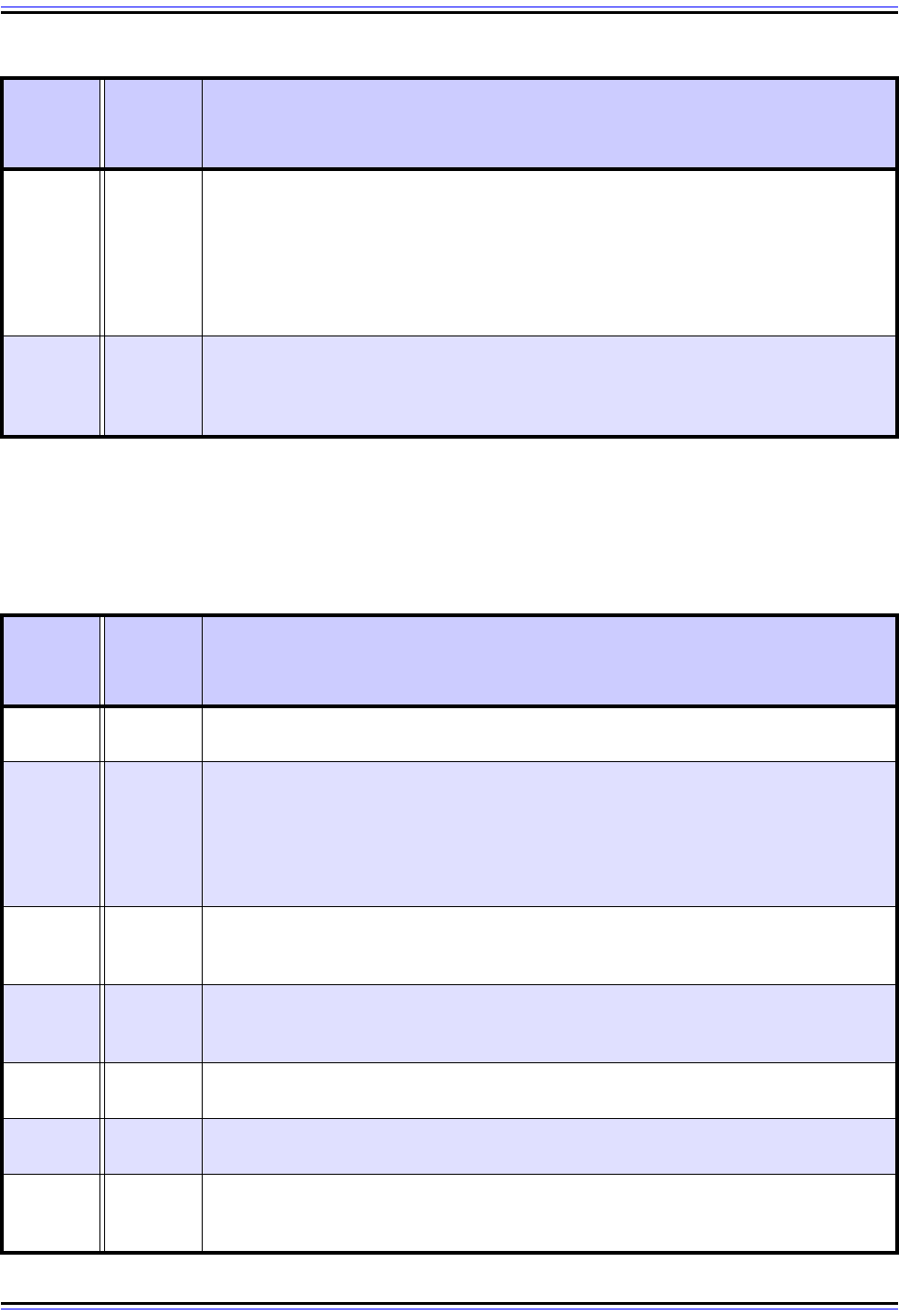
The TCP/IP Guide - Version 3.0 (Contents) ` 1183 _ © 2001-2005 Charles M. Kozierok. All Rights Reserved.
IP Layer Parameters Per Host
These are parameters that control the operation of IP on a host as a whole (not interface-
specific) see Table 194.
18 Variable
Extensions Path: Specifies the name of a file that contains vendor-specific fields
that the client can interpret in the same way as the Options or Vend field in a
DHCP/BOOTP message. This was defined to allow a client and server to still
exchange vendor-specific information even though the Option/Vend field is now
used for the general-purpose fields described in this topic.
Also see option #43 below.
255 0
End: Placed after all other options to mark the end of the option list.
One of two options that is a single byte in length, having no Data subfield (the other
being the Pad option above.)
Table 194: DHCP/BOOTP Options: IP Layer Parameters Per Host
Code
Value
Data
Length
(bytes)
Name and Description
19 1
IP Forwarding Enable/Disable: A value of 1 turns on IP forwarding (that is,
routing) on a client that is capable of that function; a value of 0 turns it off.
20 1
Non-Local Source Routing Enable/Disable Option: A value of 1 tells a client
capable of routing to allow forwarding of IP datagrams with non-local source routes.
A value of 0 tells the client not to allow this.
See the source routing IP datagram option for a bit more information on this and
option #21 below.
21
Variable
(Multiple
of 8)
Policy Filter: A set of address/mask pairs used to filter non-local source-routed
datagrams.
22 2
Maximum Datagram Reassembly Size: Tells the client the size of the largest
datagram that the client should be prepared to reassemble. The minimum value is
576 bytes.
23 1
Default IP Time-To-Live: Specifies the default value that the client should use for
the Time To Live field in creating IP datagrams.
24 4
Path MTU Aging Timeout: Specifies the number of seconds the client should use
in aging path MTU values determined using Path MTU discovery.
25
Variable
(Multiple
of 2)
Path MTU Plateau Table: Specifies a table of values to be used in performing path
MTU discovery.
Table 193: DHCP/BOOTP Options: RFC 1497 Vendor Extensions (Page 3 of 3)
Code
Value
Data
Length
(bytes)
Name and Description
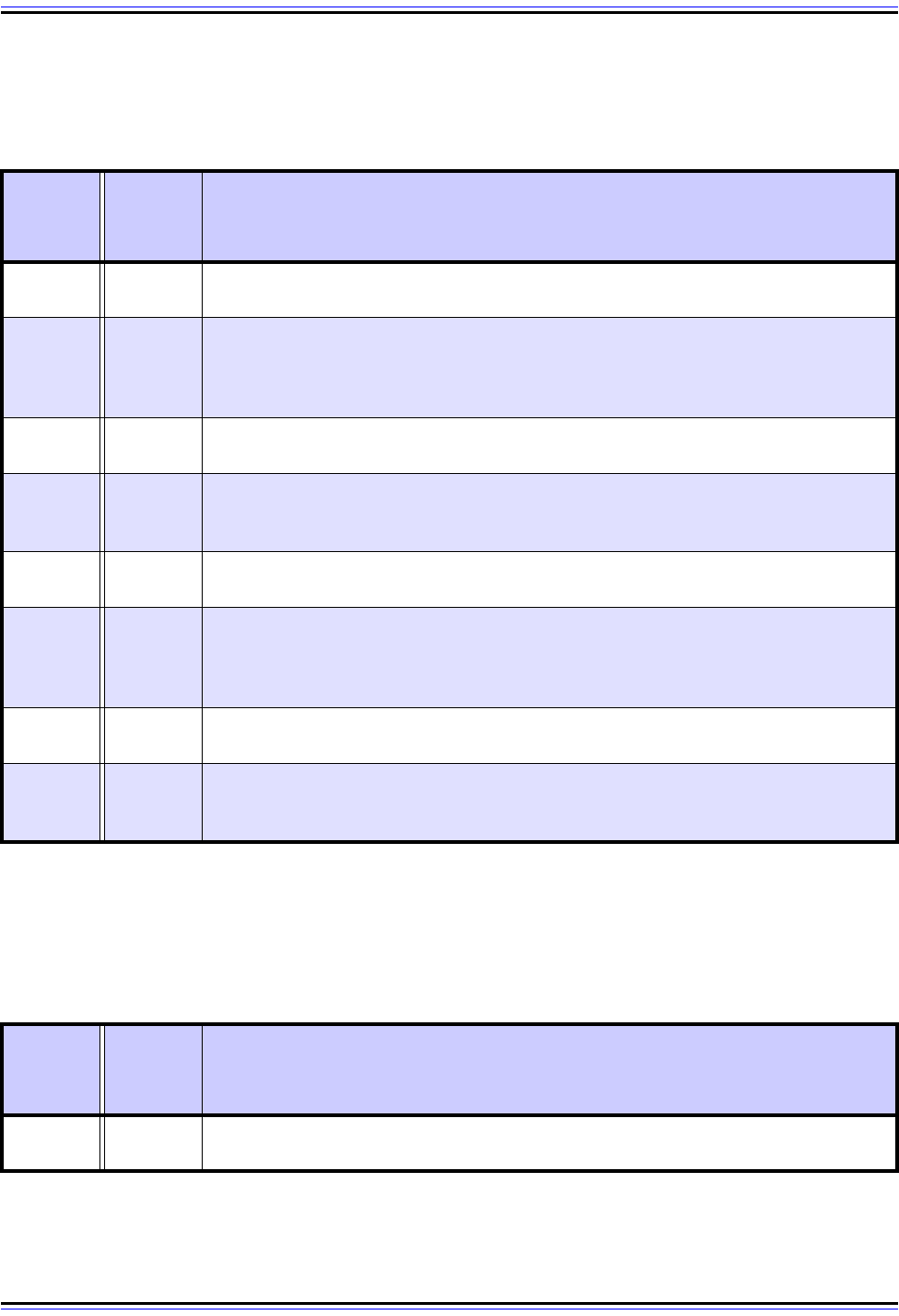
The TCP/IP Guide - Version 3.0 (Contents) ` 1184 _ © 2001-2005 Charles M. Kozierok. All Rights Reserved.
IP Layer Parameters Per Interface
These parameters are specific to a particular host interface at the IP level (Table 195)
Link Layer Parameters Per Interface
Table 196 lists the DHCP/BOOTP options that are specific to a particular link layer (layer
two) interface.
Table 195: DHCP/BOOTP Options: IP Layer Parameters Per Interface
Code
Value
Data
Length
(bytes)
Name and Description
26 2
Interface MTU: Specifies the maximum transmission unit (MTU) to be used for IP
datagrams on this interface. Minimum value is 68.
27 1
All Subnets Are Local: When set to 1, tells the client that it may assume that all
subnets of the IP network it is on have the same MTU as its own subnet. When 0,
the client must assume that some subnets may have smaller MTUs than the client's
subnet.
28 4
Broadcast Address: Tells the client what address it should use for broadcasts on
this interface.
29 1
Perform Mask Discovery: A value of 1 tells the client that it should use ICMP to
discover a subnet mask on the local subnet. A value of 0 tells the client not to
perform this discovery.
30 1
Mask Supplier: Set to 1 to tell the client that it should respond to ICMP subnet
mask requests on this interface.
31 1
Perform Router Discovery: A value of 1 tells the client to use the ICMP router
discovery process to solicit a local router. A value of 0 tells the client to not do so.
Note that DHCP itself can be used to specify one or more local routers using option
#3 above.
32 4
Router Solicitation Address: Tells the client the address to use as the destination
for router solicitations.
33
Variable
(Multiple
of 8)
Static Route: Provides the client with a list of static routes it can put into its routing
cache. The list consists of a set of IP address pairs; each pair defines a destination
and a router to be used to reach the destination.
Table 196: DHCP/BOOTP Options: Link Layer Parameters Per Interface (Page 1 of 2)
Code
Value
Data
Length
(bytes)
Name and Description
34 1
Trailer Encapsulation: When set to 1, tells the client to negotiate the use of
trailers, as defined in RFC 893. A value of 0 tells the client not to use this feature.
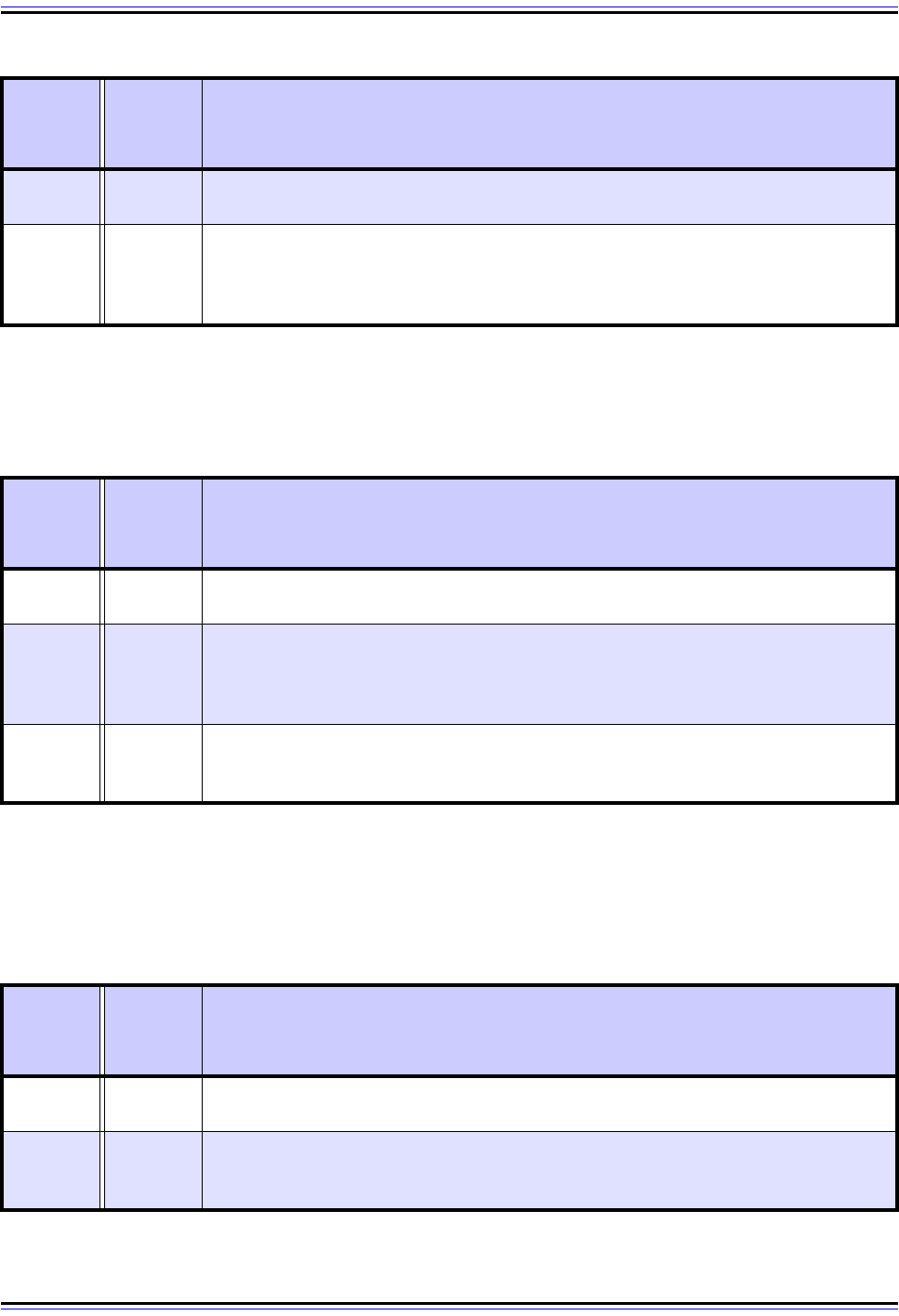
The TCP/IP Guide - Version 3.0 (Contents) ` 1185 _ © 2001-2005 Charles M. Kozierok. All Rights Reserved.
TCP Parameters
The options impacting the operation of TCP are shown in Table 197.
Application and Service Parameters
These are miscellaneous options that control the operation of various applications and
services (Table 198).
35 4
ARP Cache Timeout: Specifies how long, in seconds, the client should hold
entries in its ARP cache.
36 1
Ethernet Encapsulation: Tells the client what type of encapsulation to use when
transmitting over Ethernet at layer two. If the option value is 0, specifies that
Ethernet II encapsulation should be used, per RFC 894; when the value is 1, tells
the client to use IEEE 802.3 encapsulation, per RFC 1042.
Table 197: DHCP/BOOTP Options: TCP Parameters
Code
Value
Data
Length
(bytes)
Name and Description
37 1
Default TTL: Specifies the default Time To Live the client should use when sending
TCP segments.
38 4
TCP Keepalive Interval: Specifies how long (in seconds) the client should wait on
an idle TCP connection before sending a “keepalive” message. A value of 0
instructs the client not to send such messages unless specifically instructed to do
so by an application.
39 1
TCP Keepalive Garbage: When set to 1, tells a client it should send TCP
keepalive messages that include an octet of “garbage” for compatibility with imple-
mentations that require this.
Table 198: DHCP/BOOTP Options: Application and Service Parameters (Page 1 of 3)
Code
Value
Data
Length
(bytes)
Name and Description
40 Variable
Network Information Service Domain: Specifies the client's NIS domain.
Contrast to option #64.
41
Variable
(Multiple
of 4)
Network Information Servers: Specifies a list of IP addresses of NIS servers the
client may use. Servers are listed in the order of preference for the client to use.
Contrast to option #65.
Table 196: DHCP/BOOTP Options: Link Layer Parameters Per Interface (Page 2 of 2)
Code
Value
Data
Length
(bytes)
Name and Description
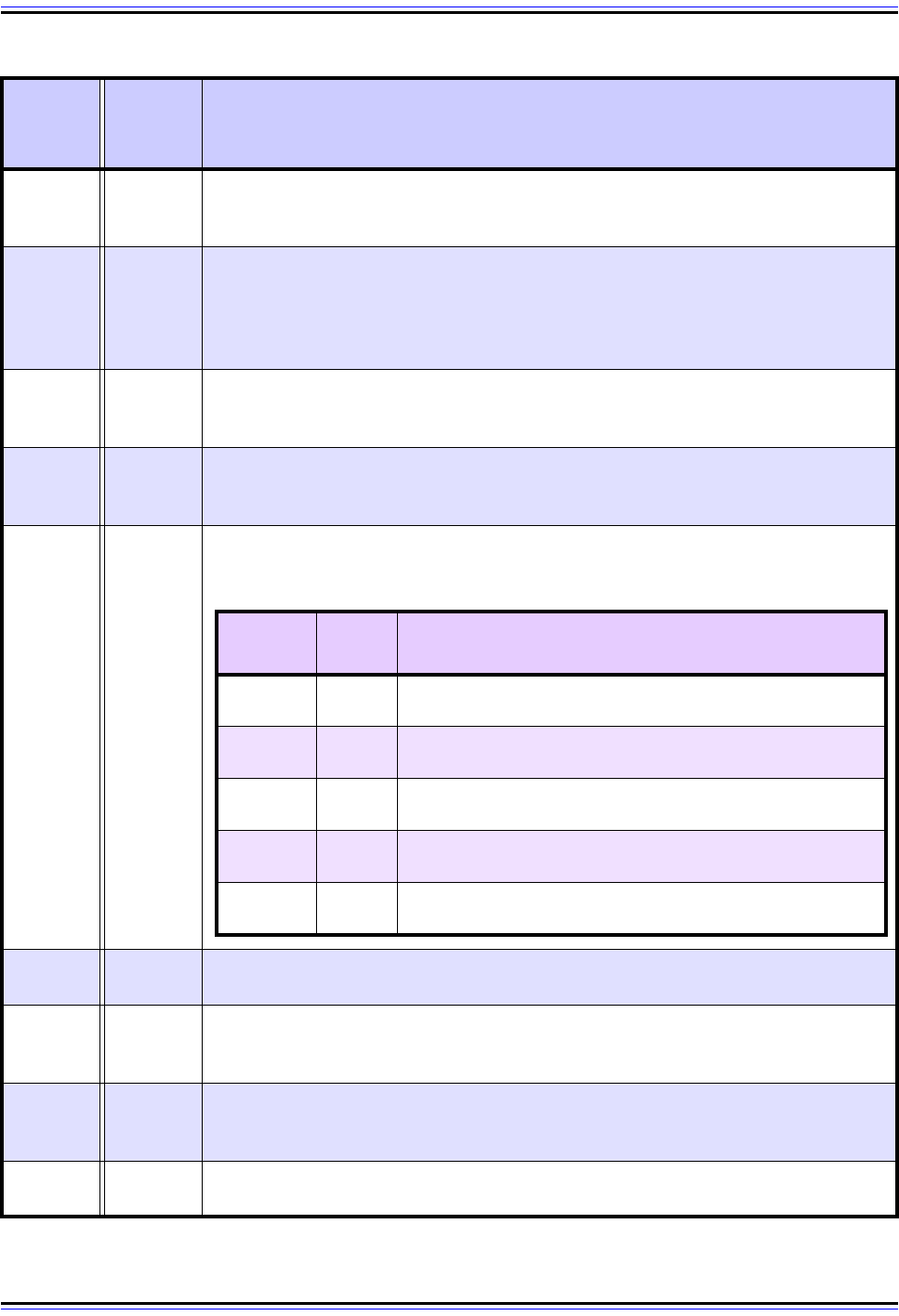
The TCP/IP Guide - Version 3.0 (Contents) ` 1186 _ © 2001-2005 Charles M. Kozierok. All Rights Reserved.
42
Variable
(Multiple
of 4)
Network Time Protocol Servers: Specifies a list of IP addresses of Network Time
Protocol servers the client may use. Servers are listed in the order of preference for
the client to use.
43 Variable
Vendor Specific Information: Allows an arbitrary set of vendor-specific infor-
mation to be included as a single option within a DHCP or BOOTP message. This
information is structured using the same format as the Options or Vend field itself,
except that it does not start with a “magic cookie”. See the end of the previous topic
for more details.
44
Variable
(Multiple
of 4)
NetBIOS Over TCP/IP Name Servers: Specifies a list of IP addresses of NetBIOS
name servers (per RFC 1001/1002) that the client may use. Servers are listed in
the order of preference for the client to use.
45
Variable
(Multiple
of 4)
NetBIOS Over TCP/IP Datagram Distribution Servers: Specifies a list of IP
addresses of NetBIOS datagram distribution servers (per RFC 1001/1002) that the
client may use. Servers are listed in the order of preference for the client to use.
46 1
47 Variable
NetBIOS Over TCP/IP Scope: Specifies the NetBIOS over TCP/IP scope
parameter for the client.
48
Variable
(Multiple
of 4)
X Window System Font Servers: Specifies a list of IP addresses of X Window
System Font servers that the client may use. Servers are listed in the order of
preference for the client to use.
49
Variable
(Multiple
of 4)
X Window System Display Manager: Specifies a list of IP addresses of systems
running the X Window System Display Manager that the client may use. Addresses
are listed in the order of preference for the client to use.
64 Variable
Network Information Service+ Domain: Specifies the client's NIS+ domain.
Contrast to option #40.
Table 198: DHCP/BOOTP Options: Application and Service Parameters (Page 2 of 3)
Code
Value
Data
Length
(bytes)
Name and Description
N
e
tBIOS
O
ver
TCP/IP
N
o
d
e
T
ype:
T
e
ll
s
th
e c
li
en
t
w
h
a
t
sor
t
o
f
N
e
tBIOS
no
d
e
t
ype
it should use. Four different bit values are used to define the possible node type
combinations. The following table shows the substructure:
Subfield
Name
Size
(bytes)
Description
Reserved
4/8
(4 bits)
Reserved: Not used.
H-Node
1/8
(1 bit)
H-Node: Set to 1 to tell the client to act as a NetBIOS H-node.
M-Node
1/8
(1 bit)
M-Node: Set to 1 to tell the client to act as a NetBIOS M-node.
P-Node
1/8
(1 bit)
P-Node: Set to 1 to tell the client to act as a NetBIOS P-node.
B-Node
1/8
(1 bit)
B-Node: Set to 1 to tell the client to act as a NetBIOS B-node.

The TCP/IP Guide - Version 3.0 (Contents) ` 1187 _ © 2001-2005 Charles M. Kozierok. All Rights Reserved.
65
Variable
(Multiple
of 4)
Network Information Service+ Servers: Specifies a list of IP addresses of NIS+
servers the client may use. Servers are listed in the order of preference for the
client to use. Contrast to option #41.
68
Variable
(Multiple
of 4)
Mobile IP Home Agent: Specifies a list of IP addresses of home agents that the
client can use in Mobile IP. Agents are listed in the order of preference for the client
to use; normally a single agent is specified.
69
Variable
(Multiple
of 4)
Simple Mail Transport Protocol (SMTP) Servers: Specifies a list of IP addresses
of SMTP servers the client may use. Servers are listed in the order of preference
for the client to use.
70
Variable
(Multiple
of 4)
Post Office Protocol (POP3) Servers: Specifies a list of IP addresses of POP3
servers the client may use. Servers are listed in the order of preference for the
client to use.
71
Variable
(Multiple
of 4)
Network News Transfer Protocol (NNTP) Servers: Specifies a list of IP
addresses of NNTP servers the client may use. Servers are listed in the order of
preference for the client to use.
72
Variable
(Multiple
of 4)
Default World Wide Web (WWW) Servers: Specifies a list of IP addresses of
World Wide Web (HTTP) servers the client may use. Servers are listed in the order
of preference for the client to use.
73
Variable
(Multiple
of 4)
Default Finger Servers: Specifies a list of IP addresses of Finger servers the client
may use. Servers are listed in the order of preference for the client to use.
74
Variable
(Multiple
of 4)
Default Internet Relay Chat (IRC) Servers: Specifies a list of IP addresses of
Internet Relay Chat (IRC) servers the client may use. Servers are listed in the order
of preference for the client to use.
75
Variable
(Multiple
of 4)
StreetTalk Servers: Specifies a list of IP addresses of StreetTalk servers the client
may use. Servers are listed in the order of preference for the client to use.
76
Variable
(Multiple
of 4)
StreetTalk Directory Assistance (STDA) Servers: Specifies a list of IP addresses
of STDA servers the client may use. Servers are listed in the order of preference for
the client to use.
Table 198: DHCP/BOOTP Options: Application and Service Parameters (Page 3 of 3)
Code
Value
Data
Length
(bytes)
Name and Description
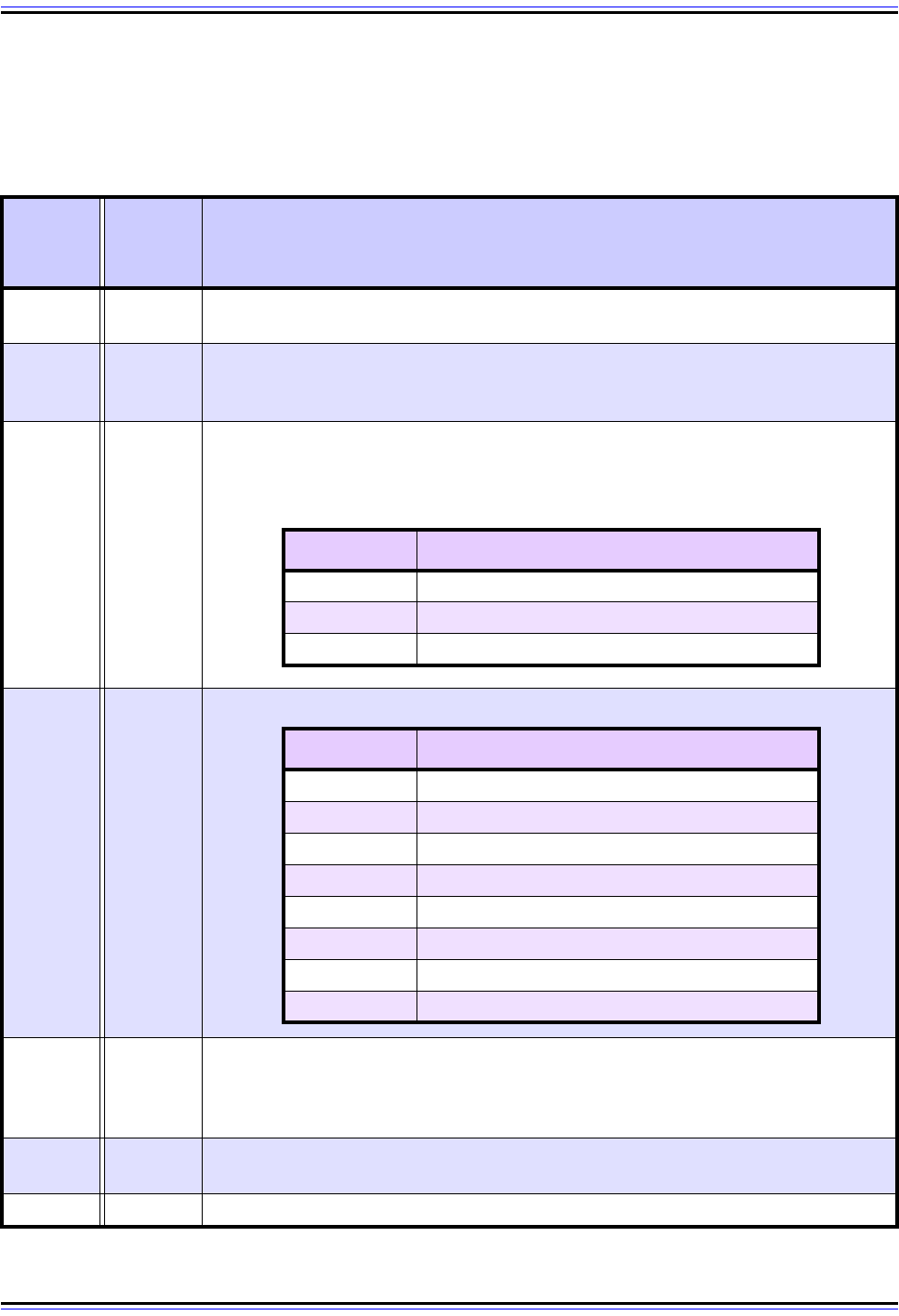
The TCP/IP Guide - Version 3.0 (Contents) ` 1188 _ © 2001-2005 Charles M. Kozierok. All Rights Reserved.
DHCP Extensions
Last but certainly not least, Table 199 describes the DHCP-only options that control the
operation of the DHCP protocol.
Table 199: DHCP Options: DHCP Extensions (Page 1 of 2)
Code
Value
Data
Length
(bytes)
Name and Description
50 4
Requested IP Address: Used in a client's DHCPDISCOVER message to request
a particular IP address assignment.
51 4
IP Address Lease Time: Used in a client request to ask a server for a particular
DHCP lease duration, or in a server reply to tell the client the offered lease time. It
is specified in units of seconds.
52 1
53 1
54 4
Server Identifier: The IP address of a particular DHCP server. This option is
included in messages sent by DHCP servers to identify themselves as the source
of the message. It is also used by a client in a DHCPREQUEST message to specify
which server’s lease it is accepting.
55 Variable
Parameter Request List: Used by a DHCP client to request a list of particular
configuration parameter values from a DHCP server.
56 Variable Message: Used by a server or client to indicate an error or other message.
O
p
ti
on
O
ver
l
oa
d
:
U
se
d
t
o
t
e
ll
th
e rec
i
p
i
en
t
o
f
a
DHCP
message
th
a
t
th
e
message's SName and/or File fields are being used to carry options, instead having
their normal meanings. This option implements the option overload feature. There
are three possible values for this single-byte option:
Option Value Option Overload Method
1 The File field is carrying option data.
2 The SName field is carrying option data.
3 Both fields are carrying option data.
DHCP Message Type: Indicates the specific type of DHCP message:
Option Value DHCP Message Type
1 DHCPDISCOVER
2 DHCPOFFER
3 DHCPREQUEST
4 DHCPDECLINE
5 DHCPACK
6 DHCPNAK
7 DHCPRELEASE
8 DHCPINFORM

The TCP/IP Guide - Version 3.0 (Contents) ` 1189 _ © 2001-2005 Charles M. Kozierok. All Rights Reserved.
57 2
Maximum DHCP Message Size: Used by a DHCP client or server to specify the
maximum size of DHCP message it is willing to accept. The minimum legal value is
576 bytes.
58 4 Renewal (T1) Time Value: Tells the client the value to use for its renewal timer.
59 4
Rebinding (T2) Time Value: Tells the client what value to use for its rebinding
timer.
60 Variable
Vendor Class Identifier: Included in a message sent by a DHCP client to specify
its vendor and configuration. This may be used to prompt a server to send the
correct vendor-specific information using option #43.
61 Variable
Client Identifier: Used optionally by a client to specify a unique client identification
for itself that differs from the DHCP default. This identifier is expected by servers to
be unique amongst all DHCP clients and is used to index the DHCP server's config-
uration parameter database.
66 Variable
TFTP Server Name: When the DHCP message's SName field has been used for
options using the option overload feature, this option may be included to specify the
TFTP server name that would normally appear in the SName field.
67 Variable
Bootfile Name: When the DHCP message's File field has been used for options
using the option overload feature, this option may be included to specify the bootfile
name that would normally appear in the File field.
Table 199: DHCP Options: DHCP Extensions (Page 2 of 2)
Code
Value
Data
Length
(bytes)
Name and Description
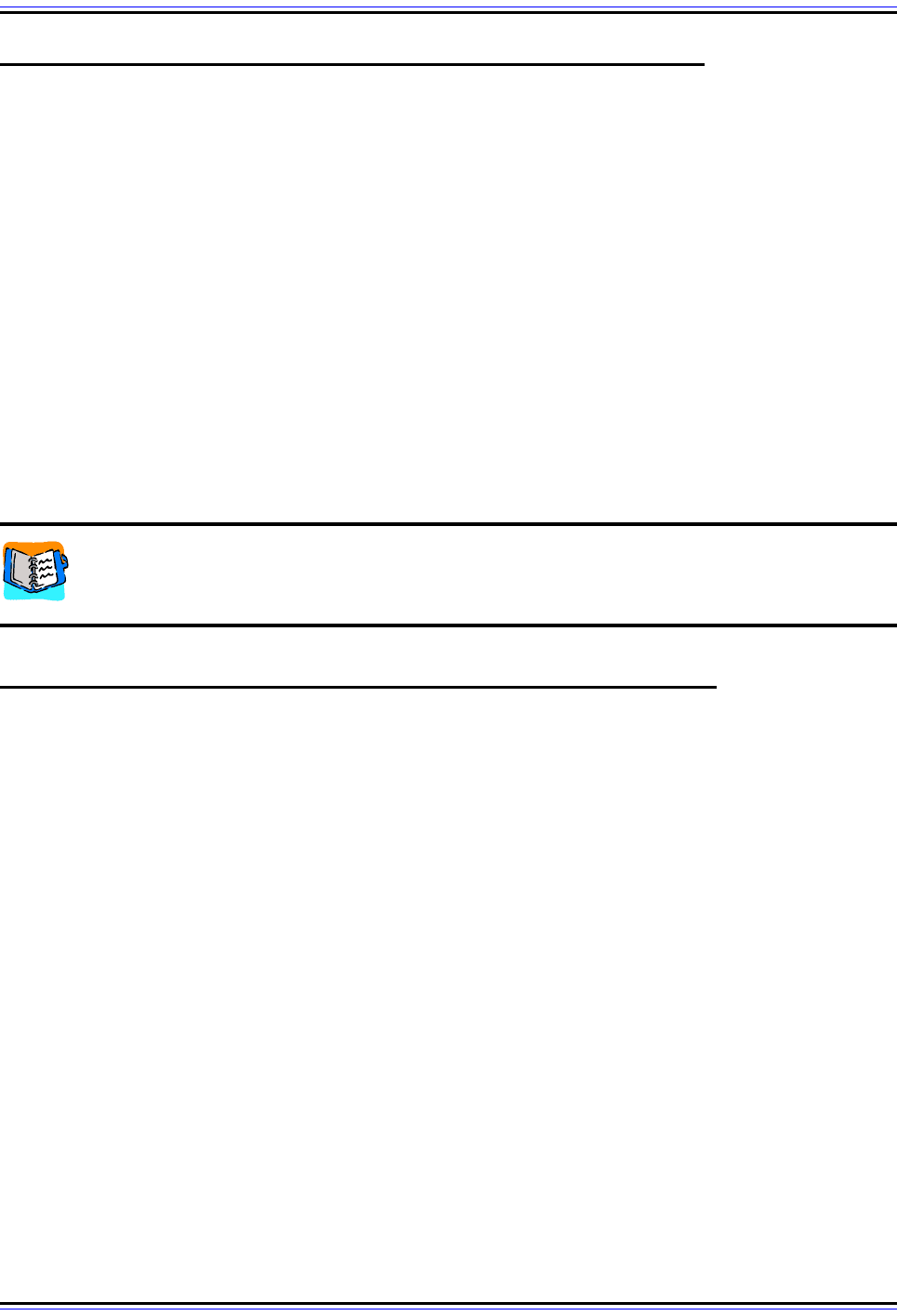
The TCP/IP Guide - Version 3.0 (Contents) ` 1190 _ © 2001-2005 Charles M. Kozierok. All Rights Reserved.
DHCP Client/Server Implementation, Features and Issues
The three preceding sections describe the DHCP address leasing system, configuration
processes and messaging. Between them, these sections provide an explanation of all the
fundamentals of the operation of DHCP. With this foundation in place, we can now proceed
to look into some of the more interesting details of how DHCP is implemented. We can also
delve into some of the extra capabilities and special features that change the basic DHCP
mechanisms we have already studied.
In this section, I discuss DHCP client/server implementation issues, special features that
enhance the protocol, and some of the problems and issues related to making DHCP work.
I begin with a discussion of DHCP server and client implementation and management
issues. I discuss DHCP message relaying and how it is related to the relaying feature used
for BOOTP. I describe the DHCP feature for providing automatic default addressing when a
client cannot contact a server, and the conflict detection feature for multiple servers. I then
cover some of the issues related to interoperability of DHCP and BOOTP, and provide an
outline of some of the more important problems and issues related to DHCP security.
Background Information: This section assumes that you are already familiar with
the basic operation of DHCP. In particular, you should be sure that you have read
through and understood the section on DHCP operation before proceeding.
DHCP Server General Implementation and Management Issues
DHCP is a client/server protocol, relying on both server and client to fulfill certain responsi-
bilities. Of the two device roles, the DHCP server is arguably the more important, because it
is in the server that most of the functionality of DHCP is actually implemented. The server
maintains the configuration database, keeps track of address ranges and manages leases.
For this reason, DHCP servers are also typically much more complex than DHCP clients.
In essence, without a DHCP server, there really is no DHCP. Thus, deciding how to
implement DHCP servers is a large part of implementing the protocol. This overall chapter
is about describing the function of protocols like DHCP and not getting into details of how to
implement them. However, I feel it is useful to look at some of the general issues related to
how DHCP servers are set up and used, to help put into perspective how the protocol really
works.
DHCP Server Implementations
A “classical” DHCP server consists of DHCP server software running on a server hardware
platform of one sort or another. A DHCP server usually will not be a dedicated computer
except on very large networks. It is more common for a hardware server to provide DHCP
services along with performing other functions, such as acting as an application server,
